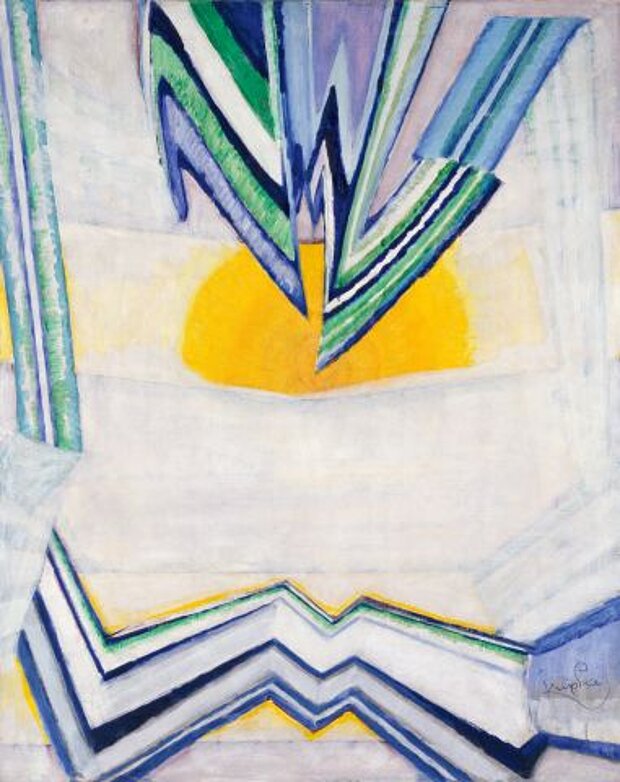
Kupka, František
Der gelbe Fleck
The Yellow Spot
1918

© mumok
| Object description | Oil on canvas |
|---|---|
| Object category | painting |
| Material |
Painting layer:
oil paint
Support:
canvas
|
| Technique |
Object:
oil paintings
|
| Dimensions |
Object:
height: 81,5 cm,
width: 65 cm,
depth: 2 cm
Frame:
height: 84,5 cm,
width: 68,5 cm,
depth: 7 cm
Weight:
weight: 21 kg
|
| Year of acquisition | 1981 |
| Inventory number | ÖL-Stg 161/0 |
| Creditline | mumok - Museum moderner Kunst Stiftung Ludwig Wien, Leihgabe der Österreichischen Ludwig-Stiftung |
| Rights reference | Bildrecht, Wien |
| Further information about the person | Kupka, František [GND] |
| Literature |
Laboratorium Moderne/Bildende Kunst, Fotografie und Film im Aufbruch Salto nel vuoto : Arte al di là della materia |
František Kupka is regarded as a pioneer of abstract art. Having studied in Prague and Vienna, he moved to Paris in 1895. Coming from the Art Nouveau movement, Kupka’s interest were rooted in translating organic forms into free color rhythms, which in the early 20th century would lead him to the utter abandonment of natural forms. He found inspiration for his “New Reality”, as he would call it, in spiritism, and esotericism, as well as in the natural sciences, which evolved at a rapid pace in the early 20th century, and questioned traditional concepts of perception and reality. Analogously to the natural sciences rendering visible the hitherto unseen, Kupka utilized the picture plane as an experimental field for creation and perception. Kupka paints “The Yellow Spot” after the end of World War One in Paris. Jagged lines in varying shades of blue, green, and white enter the canvas from three sides. With its fractured prismatic shapes, its composition is reminiscent of the gaze through a kaleidoscope. Hard, geometric lines like the ones at hand cannot be found frequently in Kupka’s oeuvre, though. The central position of the color yellow is unusual as well. In his book “Creation in Visual Arts”, he writes, “Yellow – that’s the lemon, straw, ripe golden grain. Yellow is the color of shame, the sign of brothels, and the sign of […] lepers, beloved by the Romans of the Imperial era. It is the color of the lama, the Imperial color in China, and the color of mourning in Eqypt.”
© mumok – museum moderner kunst stiftung ludwig wien